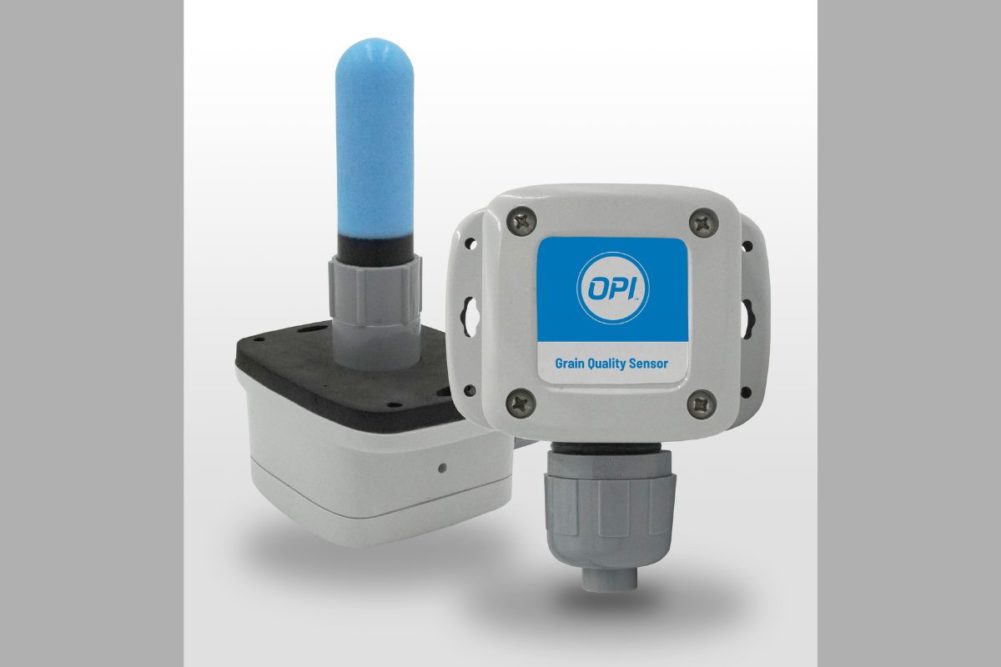CALGARY, ALBERTA, CANADA — OPI introduced a new Grain Quality Sensor to assist farmers and commercial storage operators by detecting biological activity in grains at the earliest possible stage.
It detects carbon dioxide, an early indicator of insect and mold activity that can significantly damage stored grain. The design allows installation as close to grain as possible, in the plenum and head space, for early detection and alerts. The sensor can be paired with OPI’s advanced moisture and temperature sensor cabling to identify problem areas in the bin.
“The Grain Quality Sensor is agriculture’s most advanced warning that grain movement is needed,” said Dave Crompton, chief executive officer of OPI. “Instead of waiting for odor or visual cues — which typically come too late to save grain and protect profit margin — this sensor alerts at extremely low levels of CO2, the best and earliest indicator of grain deterioration.”
Normal background CO2 is 400-600 ppm, while spoiled grain begins to smell at about 1,200 ppm. The OPI Grain Quality Sensor has 50-ppm accuracy up to 2,000 ppm. The sensor includes threshold (absolute level) alarms or rate-of-rise alarms, both configurable by the user.




